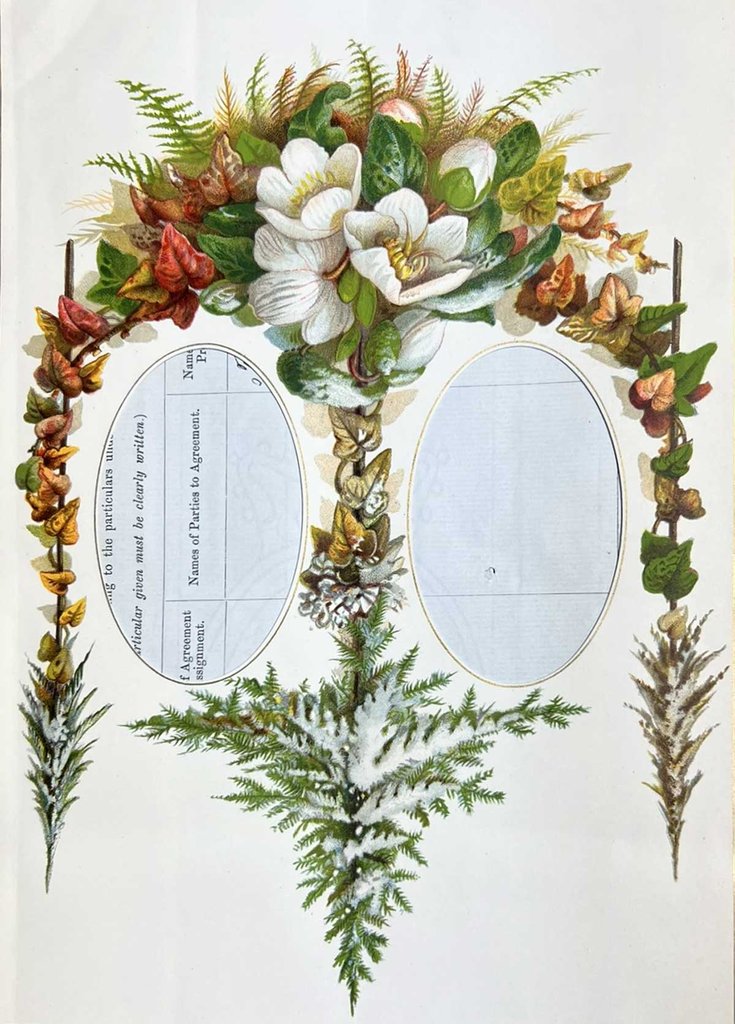Victorian envelopes
Early envelopes were often hand-made and inconsistent. The Industrial Revolution brought new methods of mass-producing paper envelopes and innovations in their design. Our Copyright and Registered Design collections offer some interesting examples.
Envelope design by Warren De La Rue
Date: 1845
Catalogue reference: View the record N/A in the catalogue
Victorian postal reforms led to further developments in envelope design. In particular the Uniform Penny Post, introduced in 1840, made sending letters cheaper through the use of envelopes and stamps.
The De La Rue stationers’ company was founded by Thomas De La Rue in 1821. As well as stationery it also produced playing cards, postage stamps and bank notes. Envelopes were a particular area of innovation for the company.
This ornamental design for an envelope was registered by Thomas’ son Warren in 1845, the same year that he patented the first envelope-folding machine below. It shows a simple design quite similar to modern envelopes today.
De La Rue plc still exists today and produces security features for banknotes.
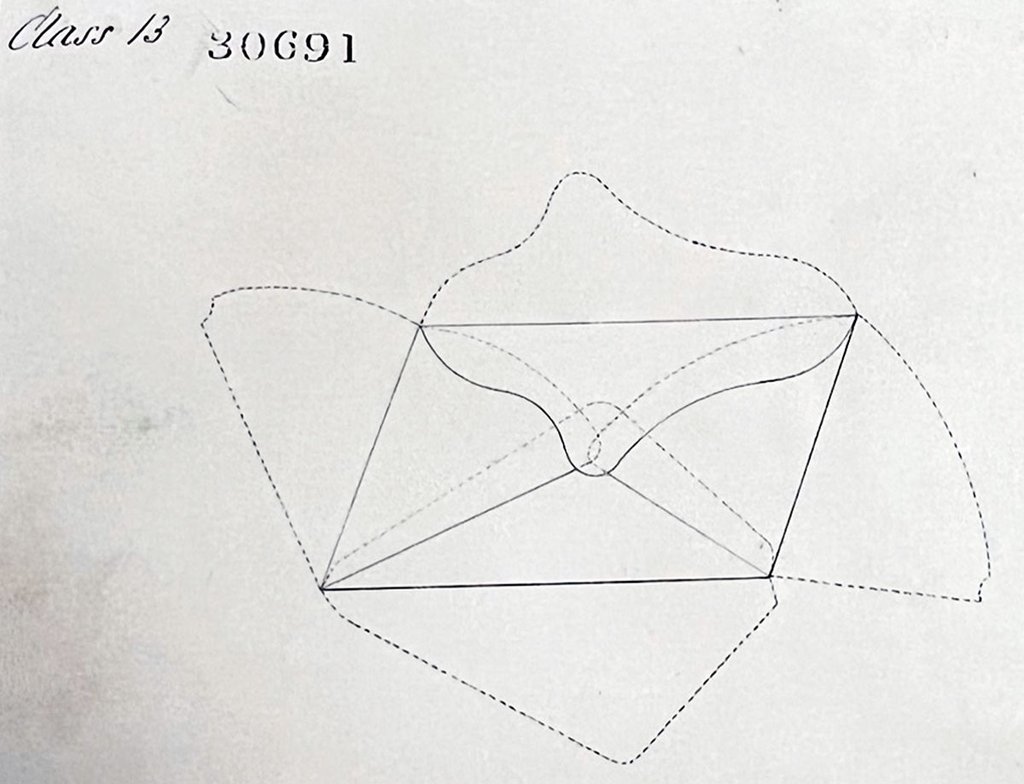
Patent specification for envelope-folding machine
Date: 1845
Catalogue reference: View the record N/A in the catalogue
In 1845, Warren De La Rue and his partner Edwin Hill received a patent for their envelope-folding machine. This specification drawing shows views of the front and side of the machine.
In the accompanying text, De La Rue and Hill state that ‘our invention relates first to improvements in the machinery for cutting or shaping paper for the making of envelopes and secondly to arranging machinery for folding over the flaps of envelopes.’ The machine was displayed at the Great Exhibition of 1851.
Warren was Thomas De La Rue's son, and was part of the family business. He was also a scientist and astronomer, famous for his astronomical photography.
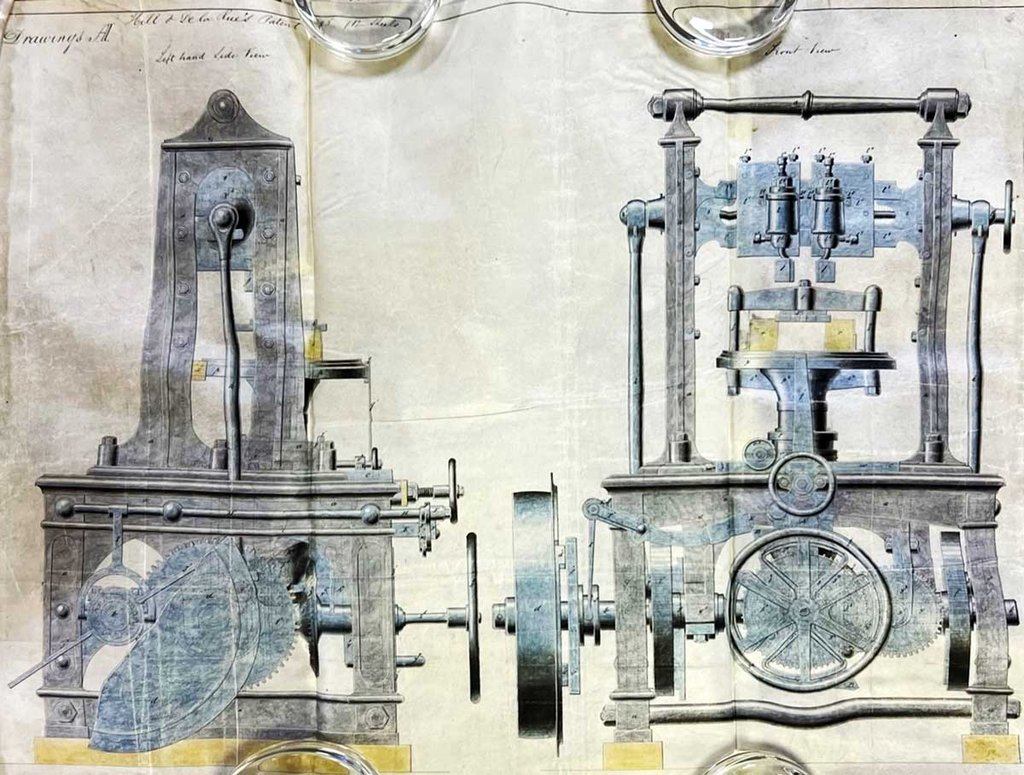
‘Improved envelope’ design
Date: 1849
Catalogue reference: View the record N/A in the catalogue
This design for an ‘improved envelope’ was registered by Thomas De La Rue & Company in 1849. The envelope had a perforated line on the flap, making it easier to tear open.
The description explains that it was designed ‘to facilitate the operation of opening, and obviate the necessity of using a knife or other sharp instrument as a slight pressure applied to the flap will cause it to part right through the line of perforation.’
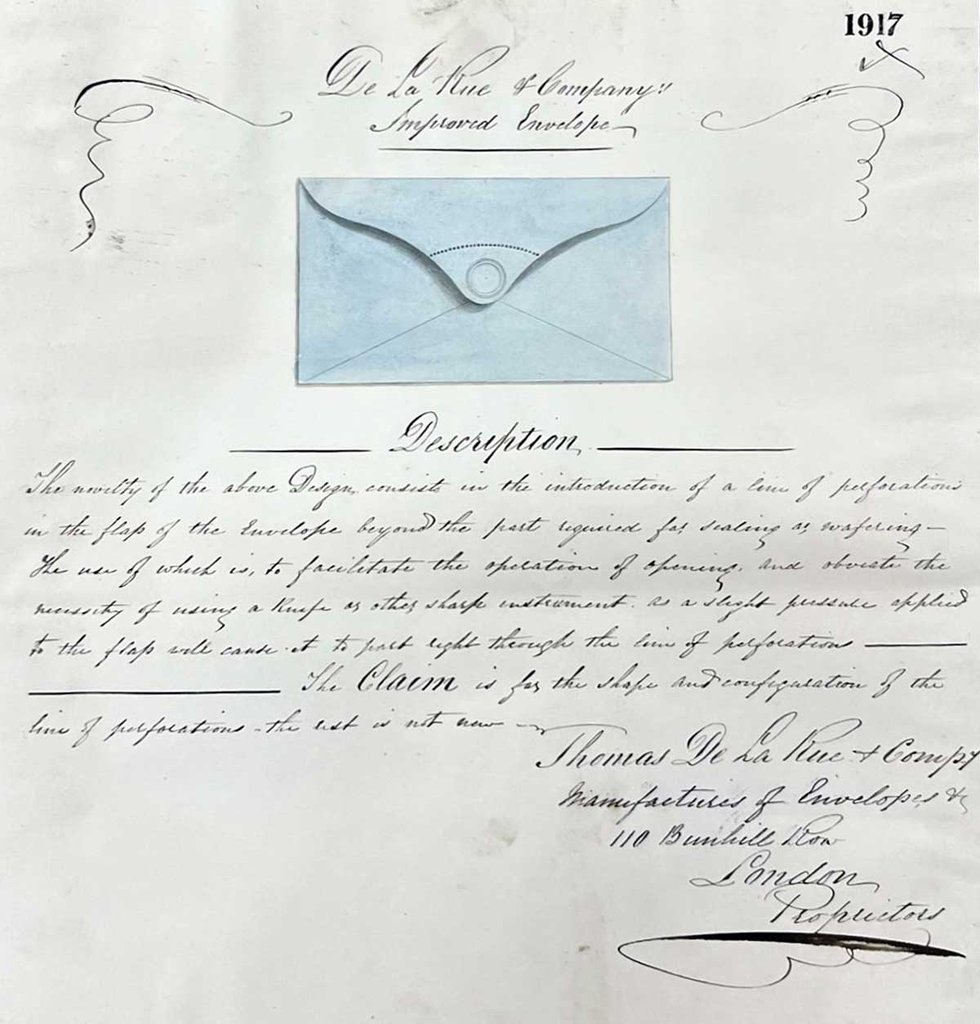
Powder envelope design
Date: 1855
Catalogue reference: View the record N/A in the catalogue
This powder envelope was registered by Goodall and Son and Mould and Tod in 1855. It was designed with additional paper folds to provide depth, allowing the envelope to hold ‘druggist’s powders or other similar packets or articles’.
Goodall and Sons was a major competitor to De La Rue as a manufacturer of playing cards, and the company also went on to produce greetings cards and other stationery.
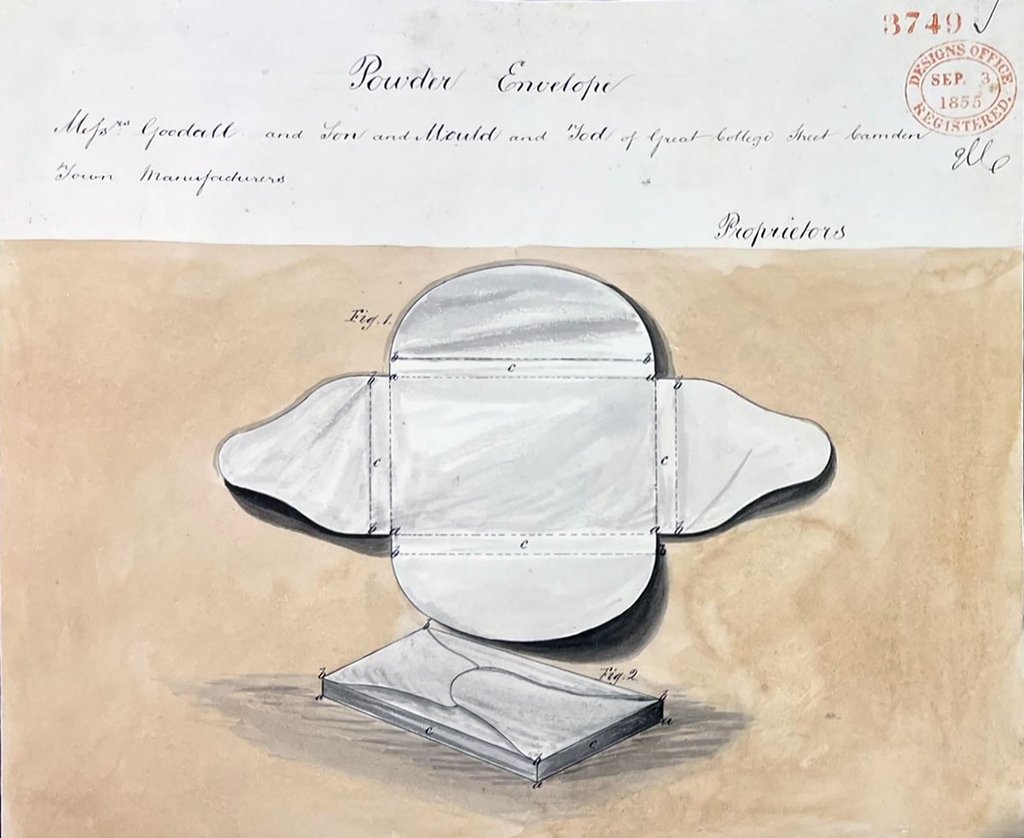
The Mourning Cross envelope design
Date: 1864
Catalogue reference: View the record N/A in the catalogue
Rituals of mourning developed significantly in the Victorian era. Black-edged stationery was commonly used for communicating the news of somebody’s death and we find many examples of mourning envelopes in the registered design collections.
This Mourning Cross envelope was registered under the Provisional and Sculpture Designs Act in 1864 by William Henry Hook. It was designed with painted sections so that when the flap was folded over, a symbol of a mourning cross would be visible.
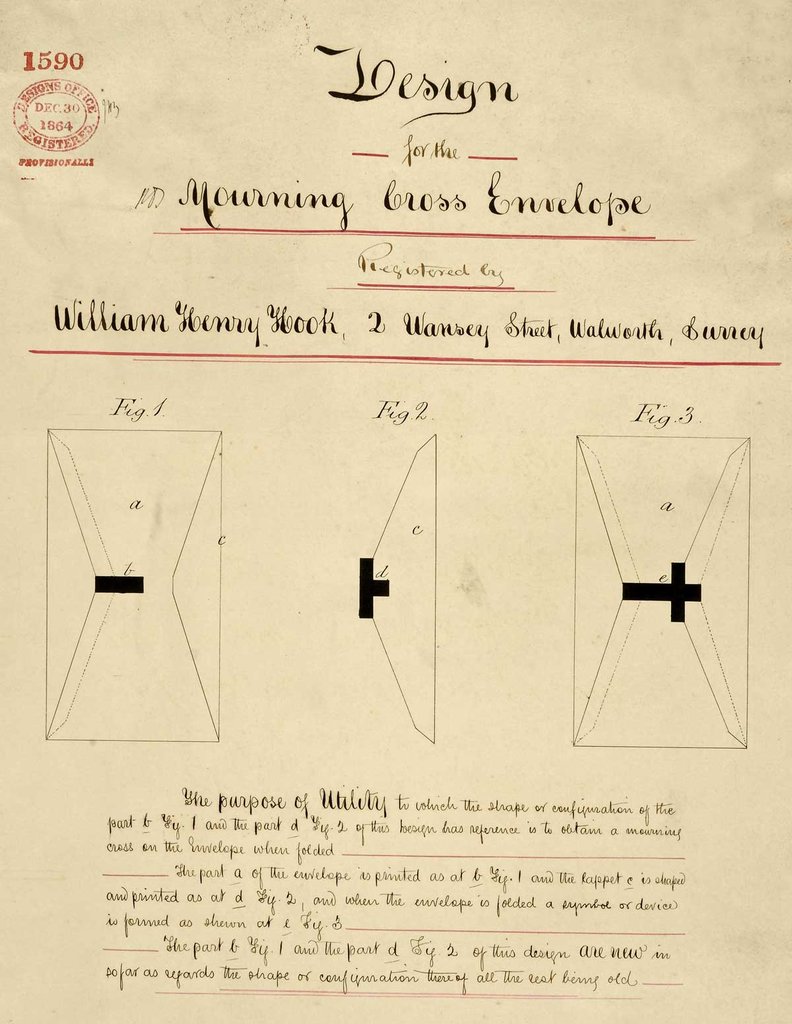
'With Love' envelope design
Date: 1894
Catalogue reference: View the record N/A in the catalogue
This envelope was registered for copyright protection on 23 August 1894 by Sandle Brothers. It displays the innovative use of die-cut paper, glitter and embossing which was popular at the time. Sandle Brothers was a wholesale stationers’ company with a shop on Paternoster Row, London. The envelope was designed by Bernhard Schneider, a German artist based in Berlin.
This image is held at The National Archives because it forms part of a record of copyright registration. In order to register this image for copyright protection, Sandle Brothers sent a copy of the image and a form to the Stationers' Company (who dealt with this regulation at the time). These images and forms now form part of The National Archives' collection in record series COPY 1.
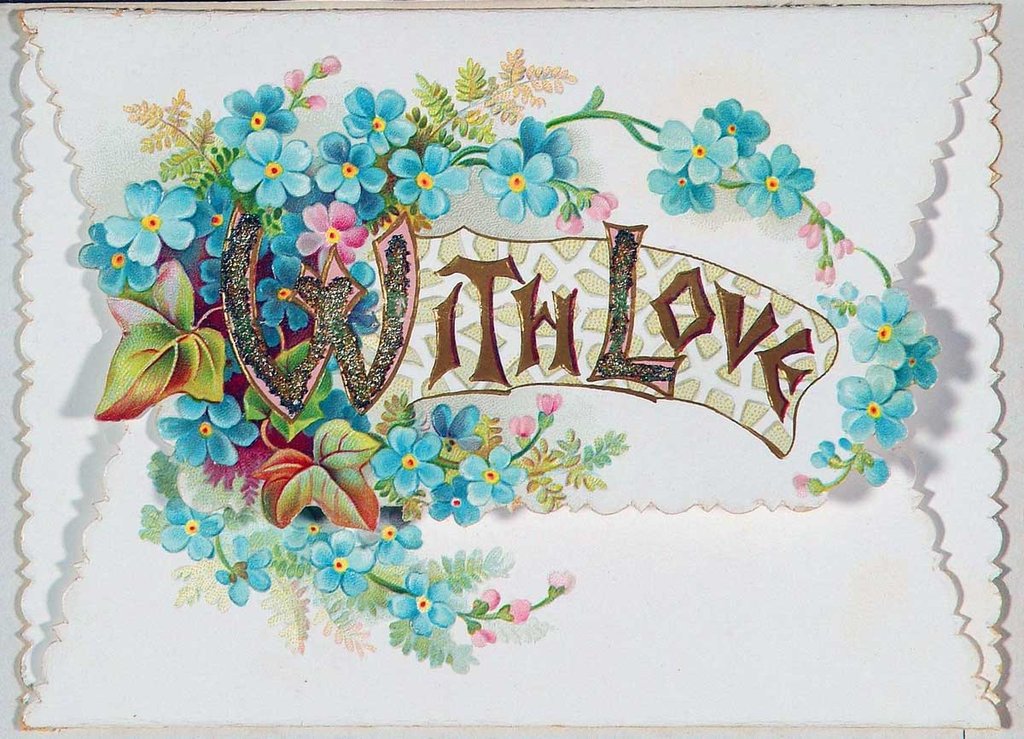
De La Rue stationery
Date: 1880
Catalogue reference: View the record N/A in the catalogue
As well as envelopes, De La Rue produced a wide variety of stationery. This illustrated album page was designed by artist Philip Lack and registered for copyright protection by Thomas De La Rue on 30 July 1880.
This page was from a photograph album titled ‘The Garland Album’ containing twelve floral and thirty-six plain pages with openings for cabinet and carte de visite portraits.
